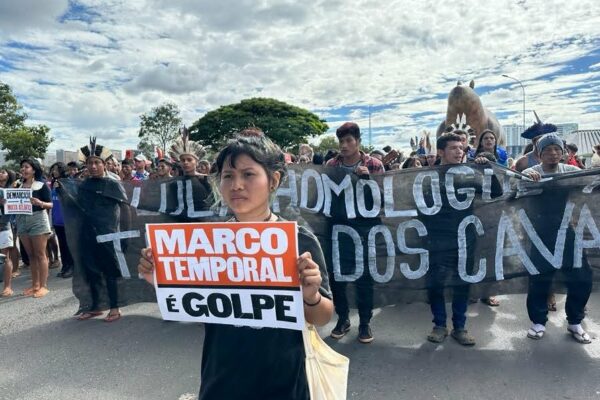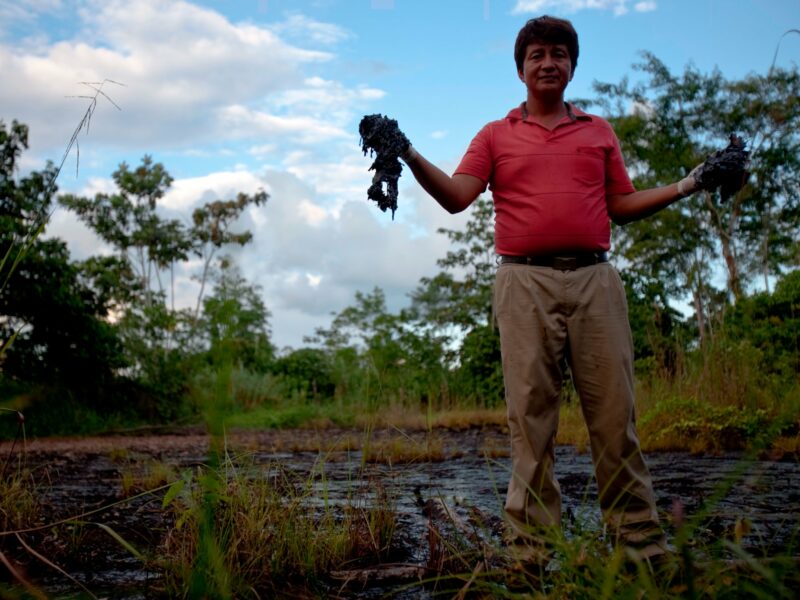This study was conducted to show the reality of life in the Amazon due to the contamination from oil camps and wells operated by Texaco. From this study, it is known that of the 1,017 families visited 957 are affected, 57 are not, and 3 famiies did not respond due to lack of information on the subject.
Of the 957 families affected, 406 attempted to find resolve their problems caused by the contamination. They presented complaints and lawsuits towards the company with environmental organizations and local authorities. 70 had favorable results, so the majority of the cases were remediated poorly or received insufficient compensation. 543 didn’t do anything, because of lack of support and resources; no faith in the laws; the threat of losing job and repression; among others.
The contamination goes directly to the rivers, which is the major source of water for the majority of families. This is one of the worst problems, because water is used in cooking, drinking, bathing, washing clothes and to feed animals. Exposure and consumption of the water has led to many infections and diseases, including skin infections, intestinal and vaginal infections, and in many cases, cancer. In women; uterine, ovarian and breast cancer (26), leukemia (3), throat (1), stomach (3), kidney, skin (5) and brain (1).
Some of the diseases that have caused death are: pelivic cancer (14), throat (4), lungs (5), stomach (6), kidney (2), liver (4), bone marrow (2), skin (2), brain (3), leukemia (13) and respiratory problems (26). These figures do not take into account the high rate of incidences, that are not reported due to poor medical infrastructure and resources in the area where people have died but where never diagnosed by a medical doctor.
In the camps operated by Texaco, 323 wells and 627 waste pools were found. 9 types of pools were found: Water, Crude with vegetation, Floating Crude, Spilled, Waste Muds, Remediated well, Poorly remediated, Dry and Covered.
Type of pool # pool %
Water 80 12.76
Crude with vegetation 53 8.45
Floating Crude 21 3.35
Spilled 8 1.28
Waste Muds 4 0.64
Poorly Remediated 194 30.94
Remediated well 17 2.71
Dry 39 6.22
Covered 211 33.65
627 100
To study the state of the waste pools, and their effect on water wells used for human consumption, soil (40) and water (28) samples were taken at all camps. The samples were analyzed at the Laboratory of Environmental Investigation and Evaluation (LABSU), in Coca, Ecuador.
According to the Environmental Law 1215, the samples tested were found to be over the allowable limits of hydrocarbons for the identification and remediation of areas contaminated by the hydrocarbon industry.
Lastly, the report establishes the existence of 5 large wetlands severly contaminated over the last 30 years. 4 of the wetlands contain “formation waters” with very high concentrations of hydrocarbons that have been collecting since the opening of the stations. These wetlands are located next to the following stations: Shushufindi South (34.9 hectares), Shushufindi SouthWest (67.8 ha), Guanta (12.34 ha), and Cononaco (6.55 ha). The fifith has received oil spills from the Cononoaco 6 well. This affects the La Andina community.
*Study conducted April-August 2003
Summary translated by Amazon Watch
Full Report is available in Spanish. Contact Leila Salazar at leila@amazonwatch.org for a copy.













